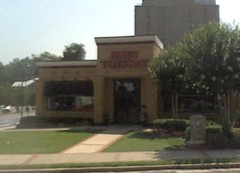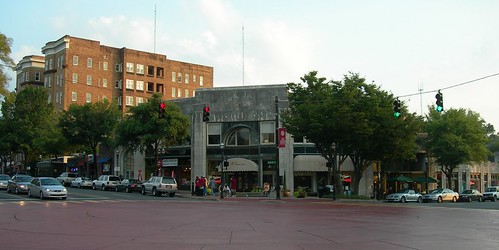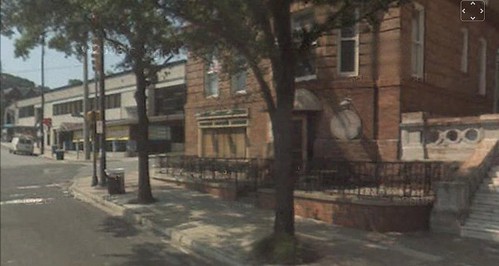Birmingham neighborhood takes a stand for walkability - and wins

Posted June 29, 2010 at 1:37PM
An appeals board in Birmingham, Alabama has unanimously rejected a misguided proposal to open a drive-through Chick-fil-A restaurant in the heart of the city’s burgeoning Five Points South district. Jeremy Erdreich, writing on his Bhamarchitect’s Blog, reports that, in making a motion to uphold a design review Committee’s decision to reject the proposal, appeals board member Elizabeth Barbaree-Tasker made the following points:
- A drive-through is not appropriate to the intent of the city’s Commercial Revitalization District ordinance;
- Traffic counts (verified at 38,000 cars per day at this intersection) make this an inappropriate place to further burden the traffic stream;
- The site plan (a small stand-alone building surrounded by a sea of parking) is not appropriate to the surrounding context, where all buildings–except this one proposed–fill the full frontage with building mass;
- The design is not architecturally compatible with the neighborhood. Other, historic buildings are clearly adaptable into multiple uses,
 while the Chick-fil-A building is designed to be ONLY a Chick-fil-A, to look like other Chick-fil-As across the country, and to not be easily adaptable as something else.
while the Chick-fil-A building is designed to be ONLY a Chick-fil-A, to look like other Chick-fil-As across the country, and to not be easily adaptable as something else.
Chick-fil-A had proposed the drive-through on the site of an abandoned Ruby Tuesday. On its face a small, local matter, this decision is emblematic of struggles across the country to establish walkable urban districts in historic neighborhoods that would be undermined by automobile-oriented, suburban-style establishments. Erdreich notes on his blog that Five Points South would benefit from a form-based code, and I suspect he’s right.
Currently the neighborhood functions primarily as an entertainment district with clubs, bars and restaurants, but is in need of further revitalization. Writing on Urbanham.com, Russ McClinton says that the city is considering further investment in the area Built in the late 19th century and energized by streetcar lines, the area prospered until, like so many others, it suffered a decline in character beginning in the 1960s as historic properties were demolished to make way for mediocre commercial buildings. This was followed by disinvestment and abandonment until, in recent years, the neighborhood has begun a comeback (see history here).
According to a story written by Lauren B. Cooper in the Birmingham Business Journal, residents and retailers fought Chick-fil-A’s proposal before the design review committee and appeals board. And it is part of a larger trend, writes Michael Tomberlin in The Birmingham News:
“Officials say the uprising against the sameness of suburban design threatening the uniqueness of some of Birmingham's established downtown neighborhoods is not a temporary bristling that will die down.
“Instead, it's a fundamental shift they say has been a long time in the making as more young professionals and longtime residents
recognize what's special about their community and are willing to unite and fight for it . . .
“Another outcry came when the public learned of a developer's plans to buy several pieces of property on [nearby] Clairmont Avenue, including landmark restaurant Bogue's and the vacant Birmingham Fire Station 22, which is on the National Register of Historic Places. An initial site plan showed the buildings would be demolished and replaced with a Walgreens drug store with a drive-through pharmacy. A Facebook page opposed to that idea had 1,940 members on [May 26].”
Ed McMahon of the Urban Land Institute, who has written extensively about commercial establishments and community character, told Tomberlin that "The Southside of Birmingham is one of the really unique places in Birmingham, one of the unique places in Alabama. It's the one place in Birmingham the creative class wants to live."
Move your cursor over the images for credit information.


